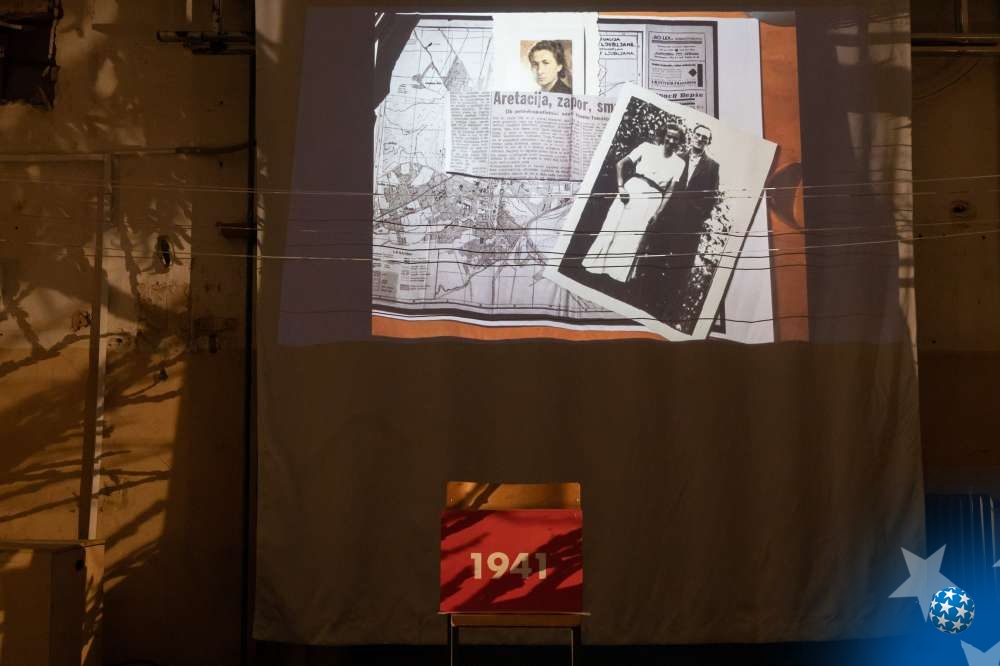One woman’s reflection particularly resonated with me, capturing the essence of what this play accomplishes.
She began by acknowledging how, at first, she thought it would be just another reinterpretation of a Greek tragedy. But as the performance unfolded, she found herself deeply moved, saying:
“I really loved the communication I had with the play and how it connected with the current situation in the world. I lived in the United States for 32 years, and recently returned to my country. Seeing the world from a new perspective, I was struck by the parallels between the ancient world of Hecuba and the modern one we live in.”
This personal connection became clearer as she continued, explaining how just the night before, she had seen a television interview about a school in Serbia facing issues that echoed those of the play. It was this realization—that the themes of suffering, injustice, and the love of a mother transcended time and place—that made Hecuba, Not Hecuba feel so profound.
“Your character,” she reflected, “came into the play with this familiar rhetoric. It was as if the stories from both worlds—Hecuba’s and our own—were intertwined. By the end, it all came together in a substantial, almost sublime way.”
For her, the play became a metaphor for the larger connection between the Old World and the New, between mother and child, and between love and pain. She described how the imagery of the helmets in the performance reminded her of a child needing to protect themselves, not just from the outside world but sometimes from within.
“It was a cry for help,” she said, “a call to humanity. This play spoke to me on a deep level—every sentence felt like it was part of the larger conversation we are having today, about connection, communication, and the need to protect ourselves from what is happening around us.”
Another woman added her perspective, sharing a moment from the performance that stayed with her:
“There are still certain moments of relief, brief but significant, where we can finally breathe and continue with the fight. One of those moments for me was when they were dancing. I loved that moment because, even though it was hard, the way they danced represented Otis, the child. It reflected what we all need—to reconnect with our bodies, to understand what we feel, and to remind ourselves of what we are fighting for.”
This insight highlighted the importance of those small but vital moments of release amid the heaviness of the play. The dance offered a reprieve, a chance for the characters—and the audience—to step back, regroup, and push forward with renewed purpose.
Another guy who was present shared his thoughts on the timeless themes within the production:
“The feelings evoked by Hecuba are timeless and will resonate with humanity for ages. When we connect these old texts with our present, we see that the emotions are true and authentic.”
His insights remind us how ancient tragedies can resonate with contemporary audiences, affirming that the core of our humanity remains constant.
During this Meeting the Authors, the actors also had an important input. Gaël Kamilindi shared that working on Hecuba, Not Hecuba felt like “being part of a family,” emphasizing the cast’s bond. Loïc Corbery added that while touring, people from different countries told them they faced similar issues, saying, “we had the same problems here with hospitals, daycare, etc... sadly,” highlighting the play’s universal relevance.
Together, the reflections of these individuals beautifully encapsulate the duality that Rodrigues presents in his work—how ancient tragedies can illuminate the very real struggles we face in the present. Through the fusion of fiction and reality, the myth of Hecuba becomes a metaphor for today’s world, where injustice and suffering persist, but so does the love and instinct to protect that define us.
As I left the theatre that evening, I couldn’t shake the words that had been spoken—not just on stage, but in the conversations after. Hecuba, Not Hecuba is more than a retelling of a Greek myth; it’s a poignant commentary on the world we live in, a world where the past and present collide, and where we are still searching for justice, connection, and understanding.

